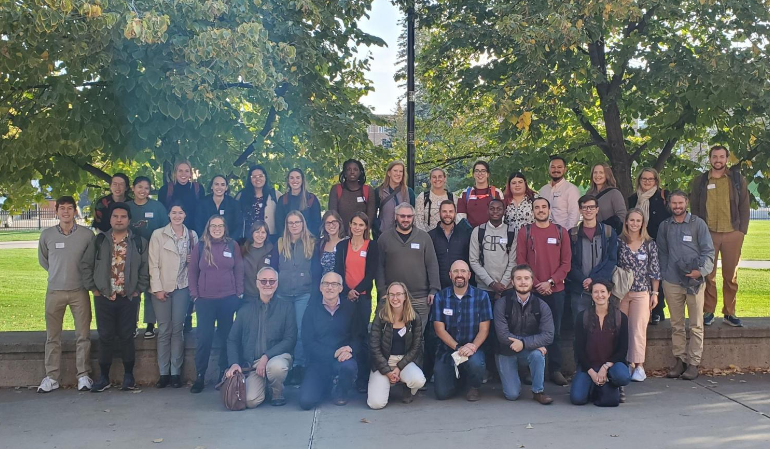Ellen Lamont - Project Profile
Ph.D. Candidate, Oregon State University, during AGeS project
HoOn the making of mountains: Using detrital apatite (U-Th)/He to decode fault-related exhumation historiesw old is the gold? How dating ore formation in SE California can help us find more of the precious metal
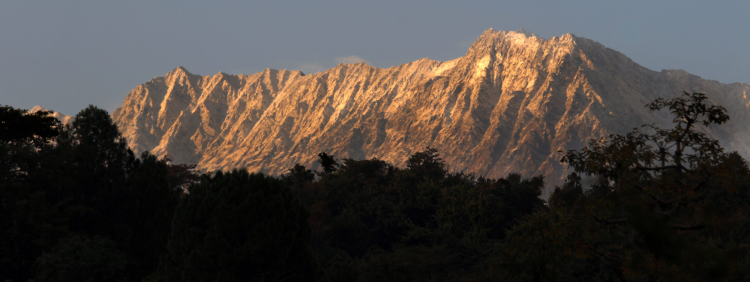
(Photo Credit: Aravind Anilkumar)
For generations, humans have been drawn to the mountainous landscapes of the world – from the base of the Rocky Mountains, to the hills of Kilimanjaro, and the top of Mt. Everest. Majestic and awe-inspiring, mountain ranges are considered places of solace, seeking and spirituality, of strategic military advantage, of abundant nourishment and resources, of both thriving life and of great disaster. As a tectonic geomorphologist and structural geologist, I too am innately drawn to mountains, often pondering the structure and form of the landscape, the processes responsible for its development and change, and the impacts they have on the populations sprawled across its vast expanse.

The word orogenesis is derived from the Greek words oros meaning ‘mountains’ and genesis meaning ‘creation’ and refers to the study of the complex processes involved in the growth and evolution of mountain ranges (orogens). While orogens are found in an array of environments, most develop along convergent plate margins where shortening and lithospheric thickening are primarily accommodated by faulting and folding that deform rock and build topography. These tectonic processes are modulated by a suite of opposing forces such as gravity, rock strength, buoyancy and climate that denude the landscape. Understanding the patterns and complex coupling between constructional and destructional processes acting on an orogen as well as the timing and partitioning of strain on orogenic structures is critical for addressing:
(1) How deformation is manifested in mountain ranges;
(2) How the spatio-temporal evolution of an orogen is encoded in a landscape and subsequently deciphered;
(3) How associated hazards will impact vulnerable communities.
Unraveling deformation in NW India
My AGeS project focuses on the development of an experimental framework that uses detrital (U-Th)/He low-temperature thermochronology, field mapping, and published geologic data to extract fault-related exhumation histories for the youngest structures deforming the NW Himalayan foreland (sub-Himalaya), addressing question (2) above. The apatite helium system (AHe) was selected for this study, because it has a low closure temperature and is thus sensitive to changes in the shallowest crustal levels. Central to the success of this study is the need to have tight geometric constraints on surface and subsurface geology, as well as, the ages of stratigraphic deposition for each of the AHe samples in order to later interpret modeled AHe thermal ages .
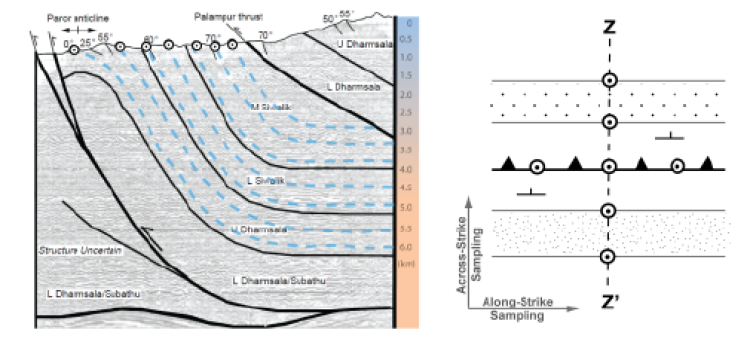
Detailed field mapping and sample collection was conducted over the course of a year prior to the start of my AGeS grant. Samples were taken within 10 m of fault surface exposures in the hanging wall within sandy layers. Additional samples were taken every 500 m in stratigraphic depth equivalence in a transect across the thrust sheet to capture changes in thermal resetting of apatite grains. AHe analysis requires high quality apatite crystals to obtain values with low error. Due to the known poor quality of apatite grains in the study area, samples 3-times the common sample size (~15 kg) were extracted to ensure sufficient quantity of quality grains during mineral separation. (Note: this is A LOT of sample to separate…yikes!)
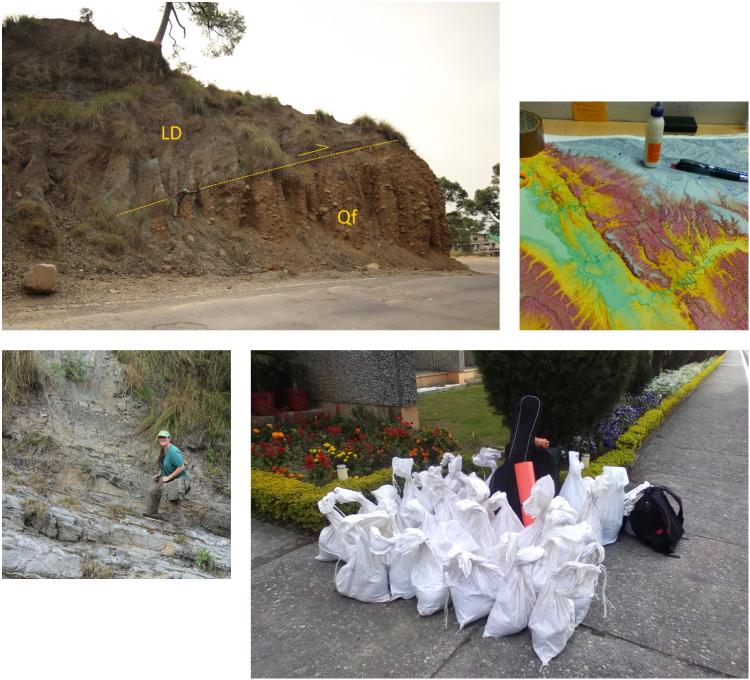
After the field work was completed, samples were taken to the mineral separation facility to be crushed and ground into powder, washed and hydraulically separated, separated again on the basis of magnetic susceptibility, and again based on chemical density. The result of mineral separation is a vile containing, in this case, all minerals from the sample with similar properties to apatite.
Returning from India with mineral separates in hand, I traveled to the Thermochronology Research and Instrumentation Laboratory (TRaIL) at the University of Colorado-Boulder. Under the guidance of Dr. Jim Metcalf and Dr. Becky Flowers, I learned how to pick and pack quality apatite grains for analysis, observed the analysis process, and discussed approaches to interpreting and modeling the AHe data. A high quality apatite grain is of large size (>60 microns), euhedral in shape, and free of inclusions (fluid bubbles or other minerals). Ideally the grain would have both termini but can be corrected for if missing. Apatite grains are scrutinized and hand selected under a binocular microscope (best to lay off coffee for awhile), measured, packed into tiny niobium tubes and placed into individual vials. For each sample, no less than 5 grains are targeted. These grains are then sent for degassing in an Alphachron and their helium abundances measured using a quadrupole mass spectrometer. Abundances of U, Th and SM are measured using an ICPMS. From this data, analytical ages are calculated.
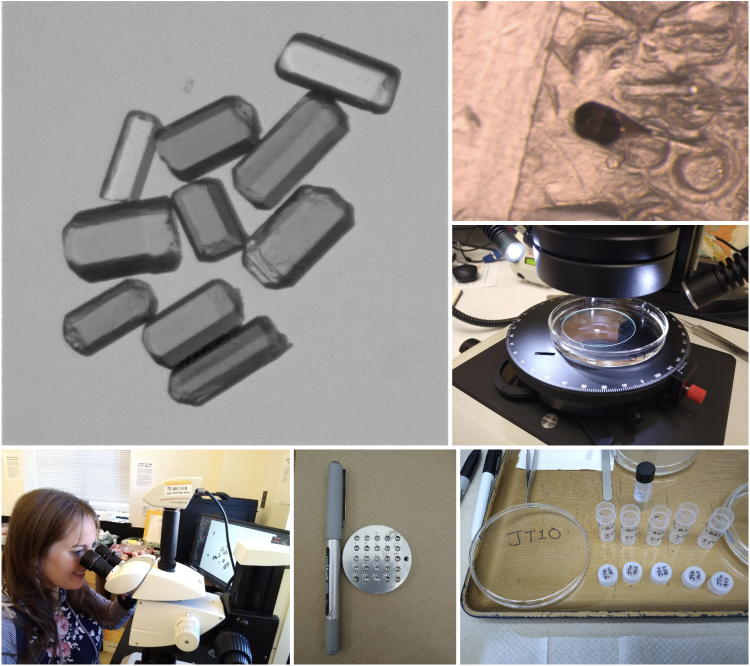
I am now in the process of reviewing the lab results, interpreting the data and modeling the sample thermal exhumation histories. (U-Th)/He ages obtained for individual apatite grains during lab analysis represent the integrated thermal history of that grain since the start of helium retention as it passed through its grain-specific closure temperature. The complex relationship between the physical processes acting on a grain and the time-temperature (t-T) dependence of helium diffusion within a grain requires inverse modeling to constrain and interpret its thermal history. Assuming that individual apatite grains from the detrital samples were sufficiently heated at depth post-deposition and burial, model results should inform fault-related exhumation of each sampled structure.
To learn more about my experience living in India for a year, visit my blog:


